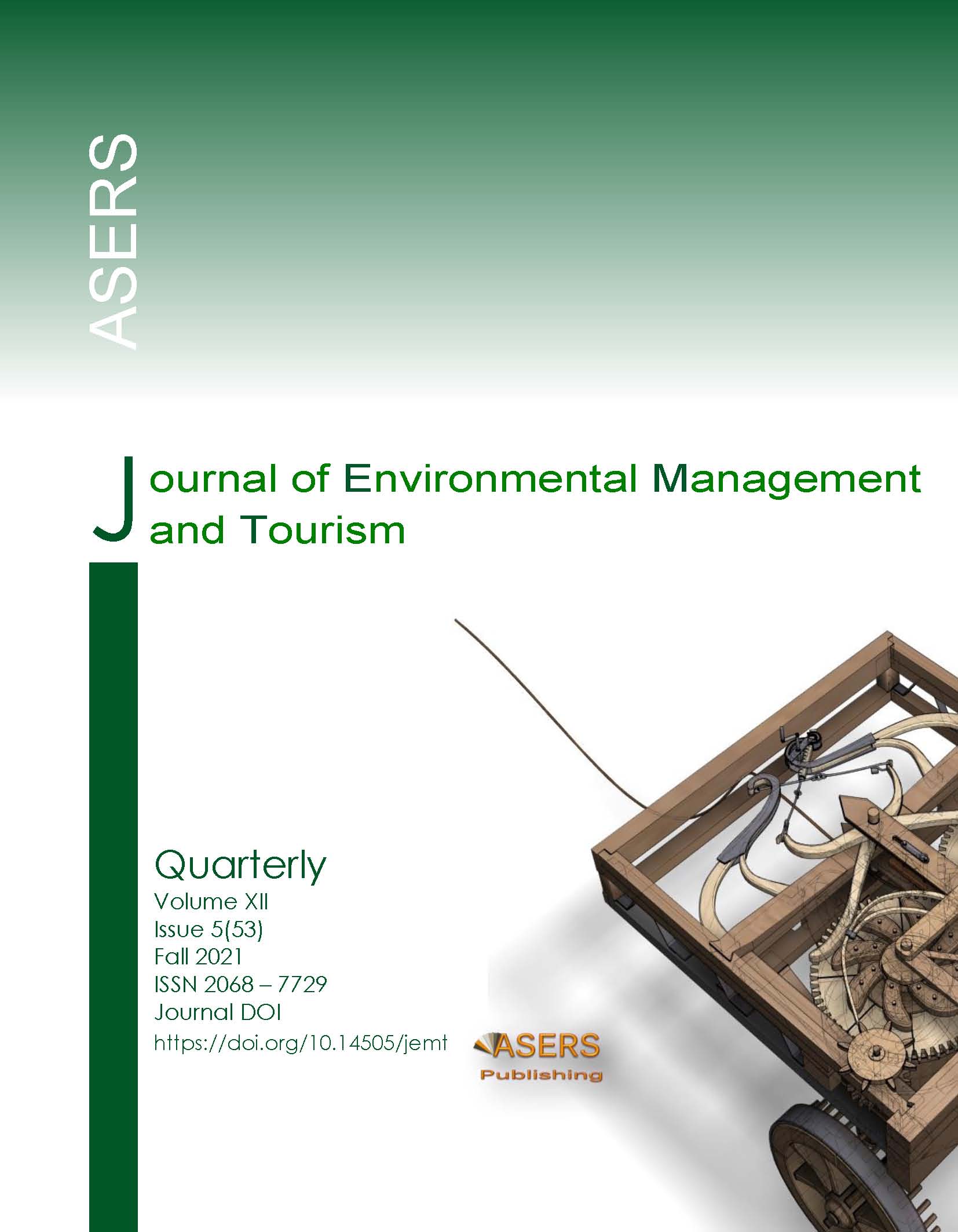The Formation of the Concept of Smart Sustainable City with the Purpose of Environmental Protection
Abstract
The article is aimed at identifying the main areas of a smart sustainable city formation that can help to protect the environment.
The article presents the results and definitions of a smart city and its variant, a smart sustainable city. Based on an expert survey, the main areas of a smart sustainable city formation have been identified, some measures recommended for implementation in these areas have been formulated, and examples of their implementation in international practice have been presented.
References
[2] Beatley, T., and Collins, R. 2000. Smart growth and beyond: transitioning to a sustainable society. Virginia Environmental Law Journal, 19(3): 287-322.
[3] Benouaret, K., Valliyur-Ramalingam, R. and Charoy, F. 2013. CrowdSC: building smart cities with large-scale citizen participation. IEEE Internet Computing, 17(6): 57–63.
[4] Bogomolova, L., and Ustyuzhantseva, A. 2020. Issues of ensuring the economic security of the northern regions of Russia. Utopía y Praxis Latinoamericana, 5(Extra 5): 51-62.
[5] Bondaletova, N.F., Evstratova, T.A., Demchenko, T.S. and Medvedeva, N.V. 2020. Assessment of the work of authorities in the field of social security of citizens discharged from military service and their family members. Utopía y Praxis Latinoamericana, 5(Extra 5): 356-369.
[6] Caragliu, A., Del Bo, C. and Nijkamp, P. 2011. Smart cities in Europe. Journal of Urban Technology. 18(2): 65–82.
[7] Dameri, R.P., and Benevolo, C. 2016. Governing smart cities: an empirical analysis. Social Science Computer Review, 34: 693-707.
[8] De Jong, M., et al. 2015. Sustainable–smart–resilient–low carbon–eco–knowledge cities; making sense of a multitude of concepts promoting sustainable urbanization. Journal of Cleaner Production, 109: 25–38.
[9] Dudin, M.N., Zasko, V.N. Dontsova, O.I. and Osokina, I.V. 2020. The energy politics of the European Union and the possibility to implement it in Post-soviet States. International Journal of Energy Economics and Policy, 10(2): 409-416.
[10] Gorokhova, A.E., et al. 2020. The development of digital economy technologies and implementation of manufacturing execution systems. Revista Inclusiones, 7(Especial): 422-434.
[11] Hollands, R. 2008. Will the real smart city please stand up? Intelligent, progressive or entrepreneurial? City, 12(3): 303–320.
[12] Ivantsova, E.A. 2016. Problems and perspectives of the solid waste management. Vestnik Volgogradskogo gosudarstvennogo universiteta. Issue 3. Economy, Ecology, 2(35): 148-159. (in Russian)
[13] Kramers, A., M. Höjer, N. Lövehagen, and J. Wangel. 2014. Smart sustainable cities: exploring ICT solutions for reduced energy use in cities. Environmental Modelling & Software, 56: 52-62.
[14] Kremcheev, E.A., Danilov, A.S. and Smirnov, Yu.D. 2019. State of metrological support of monitoring systems based on unmanned aircraft. Zapiski Gornogo Instituta, 235: 96-105. (in Russian)
[15] Letaifa, S.B. 2015. How to strategize smart cities: revealing the smart model. Journal of Business Research, 68(7): 1414-1419.
[16] Lombardi, P., Giordano, S. Farouh, H. and Yousef, W. 2012. Modelling the smart city performance. Innovation: The European Journal of Social Science Research, 25(2): 137–149.
[17] Morozova, V.V. 2019. Processes of distribution of the population of Russia. In Innovative development path of modern science: theory, methodology and practice: collection of conference proceedings, October 29, 2019, Petrozavodsk, Russia, I.I. Ivanovskaya (ed.), 60-63. Petrozavodsk: International Center for Scientific Partnership "New Science". (in Russian)
[18] Neirotti, P., et al. 2014. Current trends in smart city initiatives – some stylised facts. Cities, 38: 25–36.
[19] Savina, S.V. 2020. Artificial intelligence in analyzing the capital structure effect on financial stability. Bulletin of the National Academy of Sciences of the Republic of Kazakhstan, 1(383): 277-287. DOI:https://doi.org/10.32014/2020.2518-1467.33
[20] Savina, S.V., et al. 2020. Application of telecommunications technologies in the management of territories. Journal of Environmental Management and Tourism, 11(5): 1143-1151. DOI:https://doi.org/10.14505//jemt.v11.5(45).12
[21] Van Winden, W. 2008. Urban governance in the knowledge-based economy: challenges for different city types. Innovation: Management, Policy & Practice, 10(2-3): 197-210.
[22] Zygiaris, S. 2011. Smart city reference model: assisting planners to conceptualize the building of smart city innovation ecosystems. Journal of the Knowledge Economy, 4(2): 217–231.
[23] Rio+20. 2012. United Nations Conference on Sustainable Development. The future we want, June 20-22, 2012, Rio de Janeiro, Brazil. Available at: https://www.un.org/ru/events/pastevents/pdf/brochure_rio.pdf
Copyright© 2025 The Author(s). Published by ASERS Publishing 2025. This is an open access article distributed under the terms of CC-BY 4.0 license.
